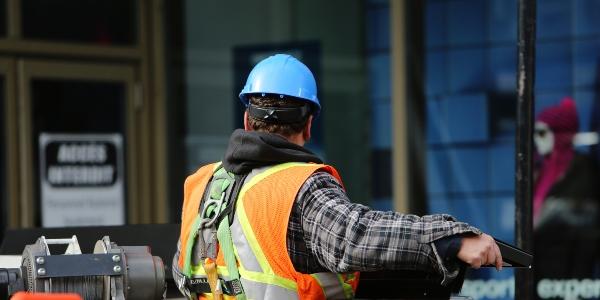Safety Precautions for Winter Construction

Not being prepared for winter weather can create a variety of safety challenges and hazards on a jobsite.
When it comes to safe winter weather operations, supervisors need to keep these key issues in mind:
1. Slip and Falls: A common construction site accident is a slips and fall, and they can happen all year round. However, the risk of falls significantly increases during winter weather due to ice and wet, slippery surfaces. When surfaces become cold, ice can accumulate on scaffoldings, ladders, walkways, stairs, and work platforms. So, if the project is open to the elements, inspect your materials and equipment periodically for the formation of ice or snow. If you notice that ice is forming, you should remove, if able, or rope off the area that is hazardous. It is crucial that the surfaces and walkways on construction sites remain maintained so that contractors have a safe working environment. Be sure to stress the importance of fall safety protection to workers when icy conditions exist.
2. Roof Snow Load: Even the lightest and fluffiest snow can become extremely heavy once packed together. The finished structure may be able to handle a significant amount of snow, but that capacity may be less during construction. Very wet, heavy snow can weigh as much as 24 lb/ft3. It would be wise for employers and their workers to know what the roof’s capacity in terms of snow. Make sure to add in the weight of workers and equipment that you plan to send up because this can tip the scales. If there is an issue with the weight of snow, or if winter conditions were not anticipated in the original schedule, work with the architects and engineers to develop additional safety standards.
3. Risk of Dehydration: Most supervisors recognize the importance of keeping a supply of water nearby on summer days but staying hydrated in the winter is just as important as it is during the summer. Supervisors should treat cold weather just as they do hot days. Cold weather causes your body to work overtime to prevent hypothermia, and the dry air also contributes to draining your body of essential fluids. Make workers aware of the dangers of dehydration, ensure that there is an adequate amount of drinking water on their work sites and encourage them to drink it.
Winter construction brings uncertainty with exactly how each day will unfold. Actively monitor the weather conditions to ensure teams are prepared for the winter months. This will keep everyone on the right track for success from groundbreaking to grand opening.
Disclaimer: The information contained in this article is for general educational information only. This information does not constitute legal advice, is not intended to constitute legal advice, nor should it be relied upon as legal advice for your specific factual pattern or situation.
Cotney Construction Law is an advocate for the roofing industry and General Counsel of NRCA. Its attorneys’ practice in all areas of construction law. The firm works extensively on matters relating to OSHA defense, which includes the management and development of safety and health strategies for construction contractors across the United States. The firm’s OSHA practice concentrates on litigation and the appeals of citations involving catastrophic construction related accidents. For more information, please visit www.cotneycl.com.























Comments
Leave a Reply
Have an account? Login to leave a comment!
Sign In